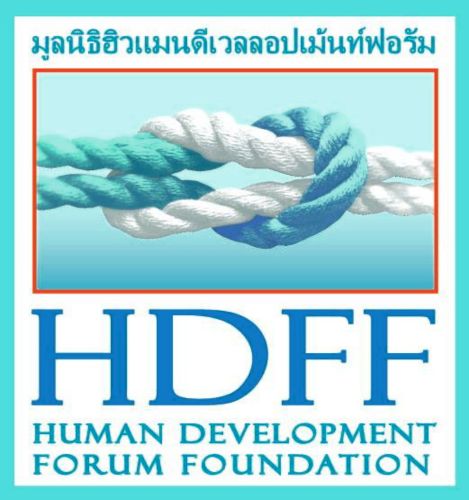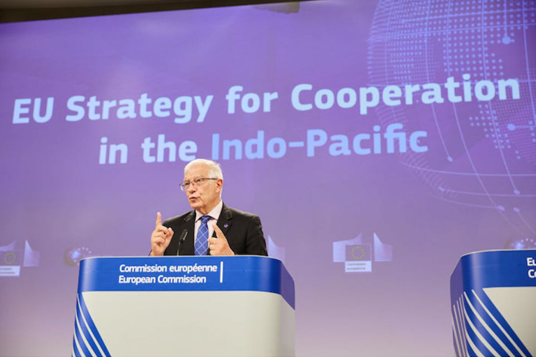EU Economic Competitiveness
The European Commission (EC) released the Draghi Report on September 9, 2024, which outlined the causes for the slowdown of economic growth in the European Union (EU). Changing dynamics in the “global paradigm,” such as the 4th technological revolution, the disruptions caused by the war in Ukraine, and global power competition between the United States and the People’s Republic of China (PRC), force the EU to make drastic changes to its growth model.[1] The report laid out 3 specific areas of action: the innovation gap; decarbonization and competitiveness; and increasing security and reducing dependencies.
The EU is turning to the Indo-Pacific to address these existential issues. While the EU is not planning to engage in strategic power competition and deterrence with the PRC like NATO, it is hoping to insert itself as an economic and normative actor to push back against violations of the rules-based international order, such as the spread of authoritarianism, unfair trade practices, and violations of human rights.
Why is the Indo-Pacific important for the EU?
The European External Action Service (EEAS) referred to the Indo-Pacific, stating “Our futures are inter-dependent,” and “Our regions share the same interest in upholding the rules-based international order.”[2]
The Indo-Pacific is of significant strategic importance to the EU and in addressing structural economic challenges. It holds more than ½ of the world’s population, and more than half of global GDP is generated in the region. 4 of the top 10 largest trade partners for the EU (the PRC, Japan, South Korea, and India) are in the region, in addition to 6 G-20 members. With the highest inter-regional trade volume in the world,[3] 70% of global goods and services trade occurs between the EU and the Indo-Pacific.[4] Therefore, the EU has an interest in promoting good governance, fair trade, and capacity building in the region.[5]
The Indo-Pacific and EU Competitiveness
The Indo-Pacific is a multi-dimensional region which provides many opportunities for deepened cooperation. The EU hopes to leverage its authority as an economic player to ensure its competitiveness in a multipolar world. The PRC is growing discontent with the US-led international order. Turning to the Indo-Pacific could allow the EU to constructively engage with the PRC, while also pushing back against attempts to dramatically rewrite the norms of the international order.
In 2021, the EU released its first official report on engaging with the IP, Strategy for Cooperation in the Indo-Pacific, which outlined 7 priority areas for cooperation: inclusive prosperity, green transition, ocean governance, digital governance and partnerships, connectivity, security and defense, and human security.[6]
Engagement with the Indo-Pacific will be a tool in tackling the innovation gap and reducing dependencies. According to a report by Panda and Ghiasy, the EU has not found its place in the 4th technological revolution. Unlike the United States and the PRC, it is not a prominent actor in emerging technologies. Only 4/50 of the world’s largest technology companies are European, while the Indo-Pacific is “gradually becoming the hub of technological innovation,” with almost all semiconductor manufacturers based in the region.[7]
The EU has limited natural resources and rare earth metals and is primarily dependent on imports from China. To decrease dependency on Chinese exports, it will look towards other resource-rich Indo-Pacific countries. The Draghi Report recommends the development of a “foreign economic policy” centered around securing critical resources. One suggestion from the report is to engage in “resource diplomacy,” in which the EU can promote investment in resource-rich countries, such as Australia and Indonesia, and develop “joint strategies” with other major buyers of critical mineral resources.[8]
The EU is a leader in climate governance and clean technologies, but according to the Draghi Report, the EU clean technology industry is limited by Chinese competition and the PRC’s “massive industrial policies and subsidies.”[9] Climate cooperation in the Indo-Pacific presents opportunities for the EU to combat climate change and simultaneously support its clean technology industry. The Indo-Pacific is one of the world’s largest carbon emitters and absorbers, and its countries will be among the most impacted by climate change. For that reason, the EU has pushed its climate governance agenda to the region. In 2023, through the Global Gateway Project, the EU committed €10 million to a clean infrastructure project in Vietnam.[10] €1 billion in loans went to other Southeast Asian nations, like Indonesia, through the Just Energy Transition Partnerships.[11] Additionally, the Green-Blue Alliance for the Pacific is focused on climate action and resilience through sustainable infrastructure projects, particularly through hydroelectric power.[12]
Conclusion:
The EU has initiated a shift to the Indo-Pacific, but in a different way than the US-led NATO strategy. As a primarily economic actor, it is focused on ensuring its economic interests and deepening multidimensional cooperation with Indo-Pacific states. The EU hopes to demonstrate to the US that it is willing to participate in upholding the rules-based international order and push back against the PRC as-needed, but it is not yet interested in engaging in strategic power rebalancing.
Citations:
[1] https://commission.europa.eu/topics/strengthening-european-competitiveness/eu-competitiveness-looking-ahead_en [2] https://www.eeas.europa.eu/eeas/eu-indo-pacific-strategy_en [3] The EU Strategy on Cooperation in the Indo-Pacific: A Meaningful Regional Complement? By Frederick Kliem https://www.kas.de/documents/288143/16920728/Panorama+2021_01+Kliem.pdf/177d26b8-bc73-fbc5-6a48-5e807728e7e6?t=1644999182121 [4] https://www.isdp.eu/publication/indo-pacific-as-a-strategic-imperative-for-the-eu-whither-australia/ [5] The EU Strategy on Cooperation in the Indo-Pacific: A Meaningful Regional Complement? By Frederick Kliem https://www.kas.de/documents/288143/16920728/Panorama+2021_01+Kliem.pdf/177d26b8-bc73-fbc5-6a48-5e807728e7e6?t=1644999182121 [6] https://www.eeas.europa.eu/eeas/eu-indo-pacific-strategy_en [7] https://www.isdp.eu/publication/indo-pacific-as-a-strategic-imperative-for-the-eu-whither-australia/ [8] https://commission.europa.eu/topics/strengthening-european-competitiveness/eu-competitiveness-looking-ahead_en [9] https://commission.europa.eu/topics/strengthening-european-competitiveness/eu-competitiveness-looking-ahead_en [10] https://international-partnerships.ec.europa.eu/news-and-events/news/global-gateway-eu-and-vietnam-strengthen-their-partnership-boost-sustainable-mobility-2024-05-30_en [11] https://www.isdp.eu/publication/indo-pacific-as-a-strategic-imperative-for-the-eu-whither-australia/ [12] https://international-partnerships.ec.europa.eu/policies/global-gateway/green-blue-alliance-pacific_en

Comments are closed